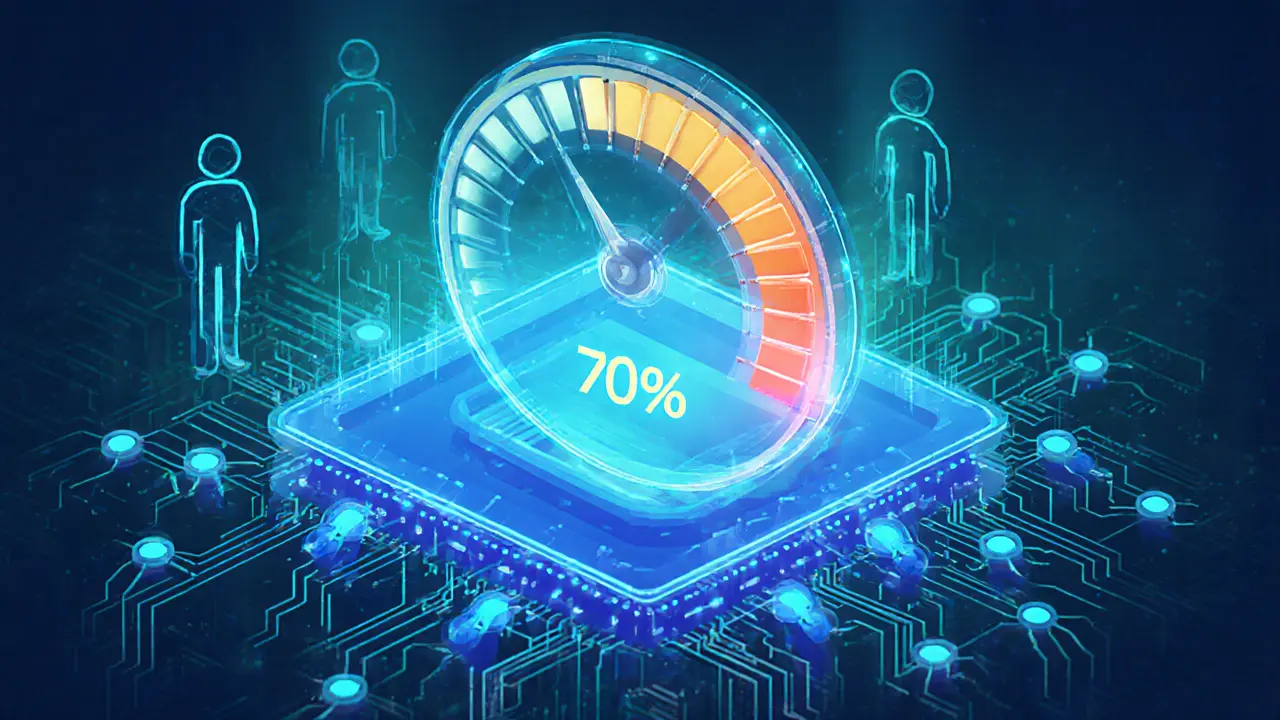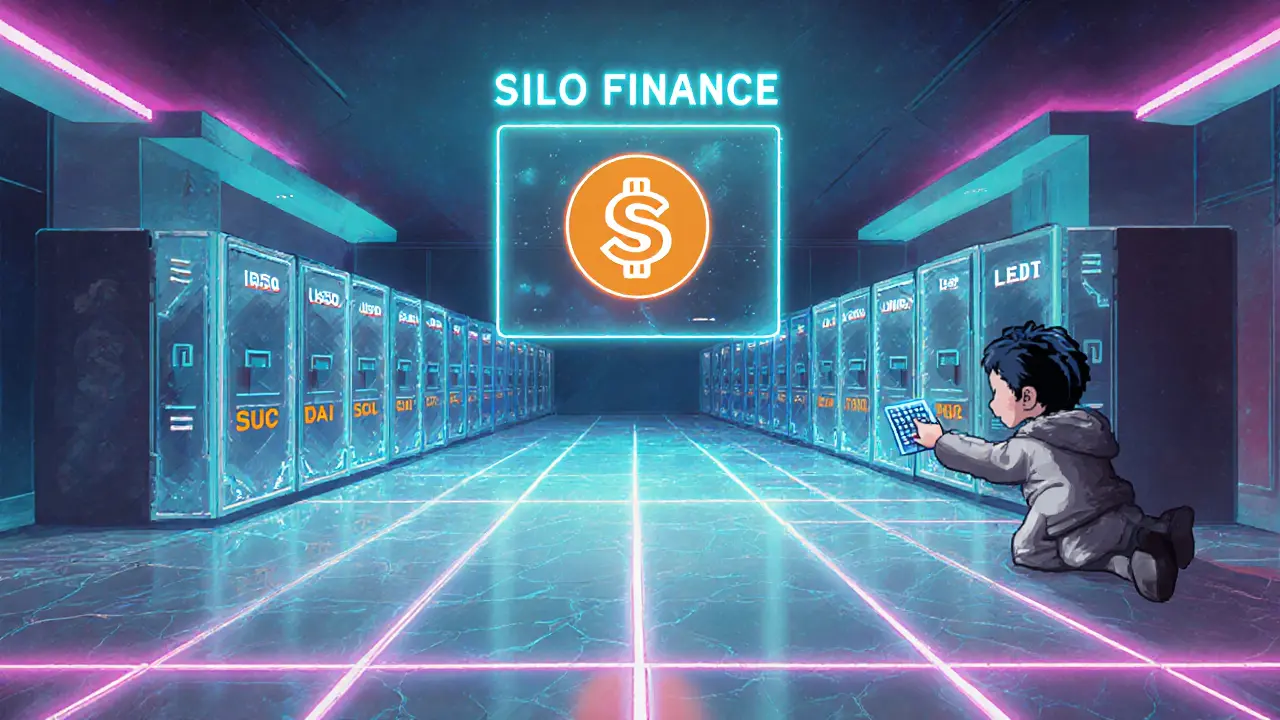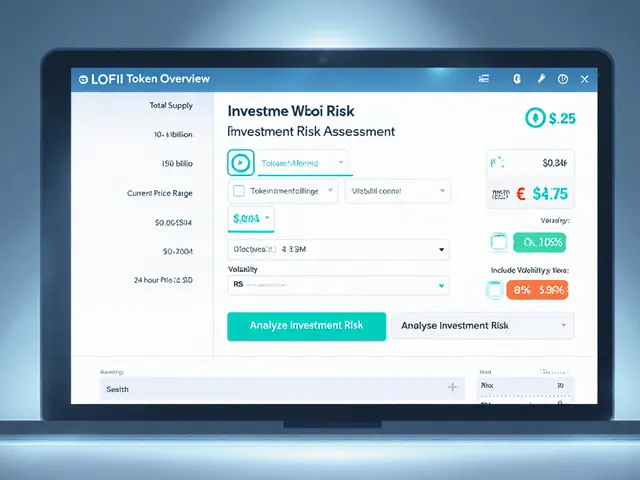DeFi Lending Rate Calculator
Aave
7.5%
Supply APY
8.9%
Borrow APR
Compound
8.3%
Supply APY
4.1%
Borrow APR
MakerDAO
11.5%
Daily Savings Rate
12.5%
DAI Borrow APR
When you lend crypto on a decentralized platform, the rate you earn isn’t set by a bank or a central authority - it’s calculated by an interest rate model that automatically matches borrowers with lenders based on real‑time market conditions. Understanding how these models work lets you predict when rates will spike, spot arbitrage chances, and avoid costly liquidations.
Key Takeaways
- Utilization (borrowed/available) is the core driver of all DeFi rates.
- Kinked (piecewise‑linear) models dominate because they nudge utilization toward an optimal 80‑95% band.
- Aave, Compound, and MakerDAO each tweak the kink, slope, and caps to balance liquidity and profitability.
- Rate volatility spikes during market stress, so risk‑aware users keep an eye on health factors and liquidation thresholds.
- Future versions are adding AI‑driven smoothing and regulatory transparency (MiCA) to tame swings.
How Utilization Drives Rates
Utilization (U) is simply the ratio of total borrowed assets to total supplied assets:
U = Borrowed ÷ Available. When U is low, lenders compete for borrowers, so the protocol raises the borrowing APR to attract more capital. When U climbs toward 100%, borrowers face higher costs because lenders can withdraw their funds. The relationship is captured by a function R(U) that varies per protocol.
Because the formula lives in a smart contract, anyone can read the current U and forecast the next rate move. This transparency is a major reason DeFi users can build bots that chase the most profitable supply‑or‑borrow curves.
Types of DeFi Rate Models
Three broad families appear across major platforms:
- Linear models - a single straight line where rate rises steadily with utilization. Simple but offers weak incentives to keep liquidity balanced.
- Non‑linear models - exponential or polynomial curves that accelerate faster as utilization grows. Provide stronger penalties for over‑utilization.
- Kinked (piecewise‑linear) models - two slopes separated by a “kink” point. Below the kink, the slope is shallow; above it, the slope jumps sharply. This design keeps utilization in a target band (often 80‑95%) while still allowing rates to surge if liquidity dries up.
All three use the same inputs (U, governance parameters, asset‑specific caps), but the kinked approach is the most common because it balances predictability and safety.
Major Protocols Deep Dive
Aave uses a piecewise‑linear kinked model with a configurable optimal utilization of 85%. It offers two rate types:
- Variable rate - moves automatically with utilization.
- Stable rate - locked for up to 30days, useful when borrowers expect a calm market.
Current 30‑day averages (Oct2025): USDC supply APY≈7.5%, USDC borrow APR≈8.9%. The protocol’s health factor threshold (1.0) triggers liquidation when collateral value drops too far.
Compound relies on a similar kinked curve but with a lower optimal utilization of 80%. It supports six major collaterals and offers only a variable rate.
- USDC supply APY≈8.3% (30‑day average).
- USDC borrow APR≈4.1%.
- LTV caps at 75% for most assets.
MakerDAO does not use a utilization model for its DAI savings rate; instead, it sets a Daily Savings Rate (DSR) governed by MKR holders. The DSR currently sits at 11.5% (annualized), while borrowing DAI costs about 12.5% APR. Maker’s vault system enforces stricter LTVs (66‑75%) and a liquidation penalty of 13%.
Side‑by‑Side Comparison
| Protocol | Rate Model | Optimal Utilization | Supply APY (USDC) | Borrow APR (USDC) | Max LTV |
|---|---|---|---|---|---|
| Aave | Kinked (piecewise‑linear) | 85% | 7.5% | 8.9% | 80% (core assets) |
| Compound | Kinked (piecewise‑linear) | 80% | 8.3% | 4.1% | 75% |
| MakerDAO | DSR (fixed savings) + variable borrow | N/A | 11.5% (DSR) | 12.5% (DAI) | 66‑75% |
Practical Implications for Lenders and Borrowers
For lenders, the biggest payoff comes from supplying assets that sit just below the kink point. At 80‑90% utilization, supply APYs peak while the risk of sudden liquidation stays low. However, during market crashes utilization can jump past 95%, causing rates to spike dramatically (Aave saw >50% APY in March2020). Savvy lenders keep a buffer of liquid assets or use stable‑rate options where available.
Borrowers should monitor the health factor (Aave) or collateralization ratio (Compound) because a sudden rise in utilization can push their APR up and trigger liquidation. Setting a lower LTV than the maximum gives extra wiggle room.
Arbitrageurs exploit the spread between protocols. For example, supplying USDC on Compound (≈8.3% APY) while borrowing the same asset on Aave when its variable rate dips below 5% yields a net positive carry. This strategy hinges on low gas costs and fast transaction execution; during Ethereum congestion, users report $50‑$200 in fees.
Future Trends and Regulation
Both Aave and Compound are rolling out dynamic‑kink adjustments that respond to historical volatility. Aave V4 (Q22025) adds a rate‑smoothing algorithm that softens the steep post‑kink slope, reducing flash‑crash spikes. Compound V3 (Sept2025) introduces a volatility‑weighted kink that moves the optimal point up or down based on market stress indicators.
Artificial‑intelligence models are entering the scene. Early‑stage protocols are training on‑chain data to predict utilization trends and adjust parameters in near‑real‑time. By 2026, AI‑augmented pricing could become the norm, offering tighter spreads and more predictable yields.
Regulatory pressure is rising in Europe. The MiCA framework, expected to be fully enforceable in 2026, mandates clear disclosure of rate‑setting algorithms and audit trails. Platforms that already expose utilization and rate formulas will have an easier compliance path.
Lastly, central bank digital currencies (CBDCs) may introduce risk‑free rates that compete with DeFi yields. Yet DeFi’s composability and permissionless access keep it attractive for users seeking higher returns and programmable finance.
Frequently Asked Questions
What is utilization in DeFi lending?
Utilization is the ratio of borrowed assets to the total amount supplied on a protocol. It tells the system how “full” the lending pool is and directly influences the borrowing APR.
Why do most protocols use a kinked interest rate model?
A kinked model creates two zones: a gentle slope that encourages borrowing up to an optimal utilization band, and a steep slope that quickly penalizes over‑utilization. This keeps liquidity healthy while still rewarding lenders.
How can I protect myself from sudden rate spikes?
Maintain a buffer below the protocol’s maximum LTV, consider stable‑rate options (if available), and monitor real‑time utilization dashboards. Diversifying across multiple platforms also spreads risk.
Is arbitrage between Aave and Compound still profitable?
Yes, when the supply APY on one platform exceeds the borrow APR on another by more than the gas cost. The window narrows during high network congestion, so speed and fee management are key.
Will upcoming AI‑driven rate models make DeFi safer?
AI can smooth out extreme jumps by forecasting utilization trends and adjusting parameters pre‑emptively. Early pilots show reduced volatility, but the technology is still experimental.








Liam Wells
October 8, 2025 AT 09:14One must consider, with utmost scrutiny, the inherent volatility embedded within kinked interest rate structures; such mechanisms, while ostensibly designed to preserve liquidity, in practice foment abrupt APR escalations that can destabilize borrower positions, particularly when utilization breaches the prescribed thresholds. Moreover, the deterministic nature of these models belies the stochastic reality of on‑chain market dynamics, rendering them, in effect, brittle under stress conditions.
Nicholas Kulick
October 14, 2025 AT 04:08In practice, monitoring the utilization slider in real time helps you anticipate when a protocol’s borrow APR will jump, so you can either reduce exposure or shift assets before the kink triggers.
Kate O'Brien
October 19, 2025 AT 23:01Did you ever notice that every time a new central bank digital currency is announced, the DeFi rates start wobbling like a conspiracy board? It feels like they’re trying to push us into some hidden agenda.